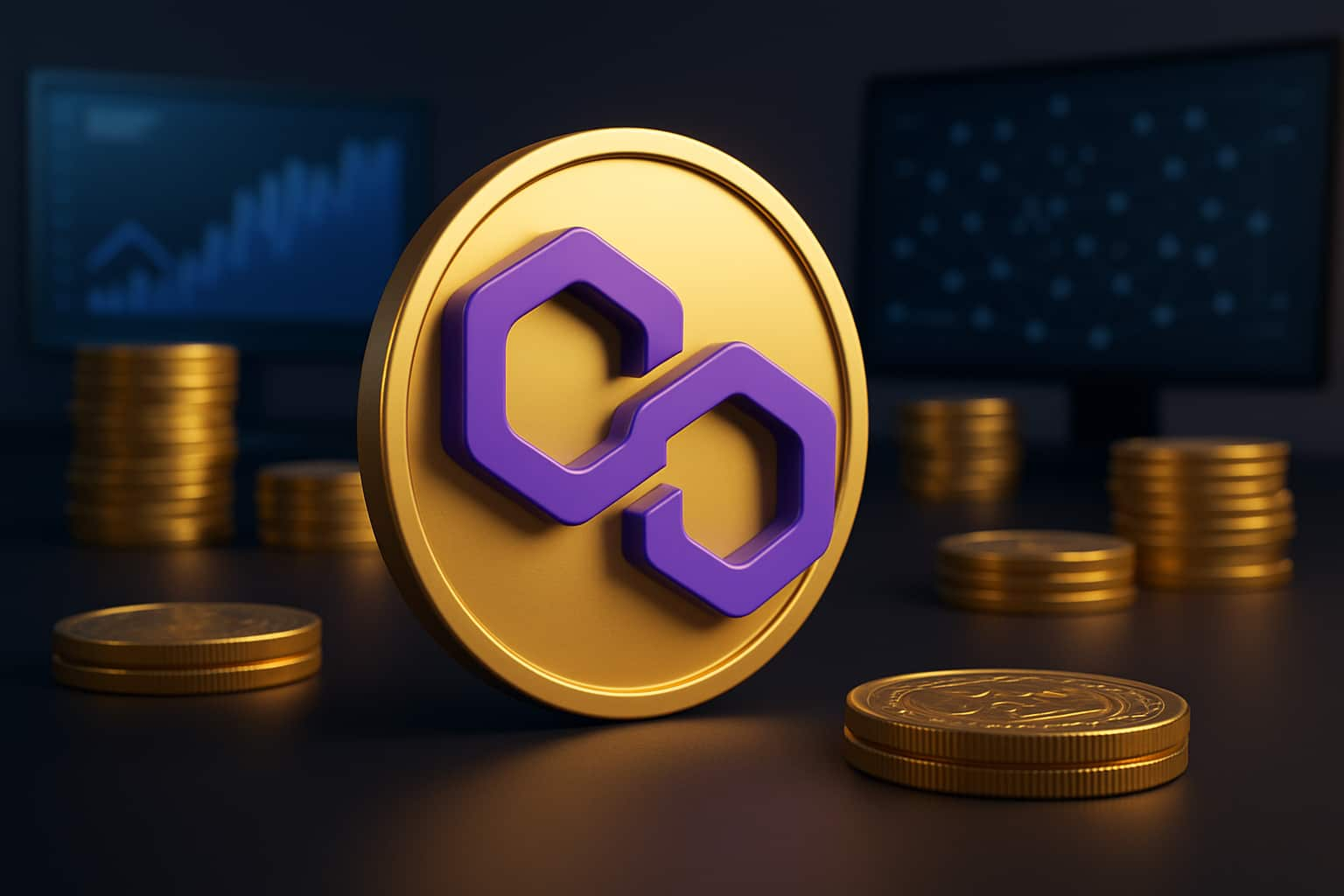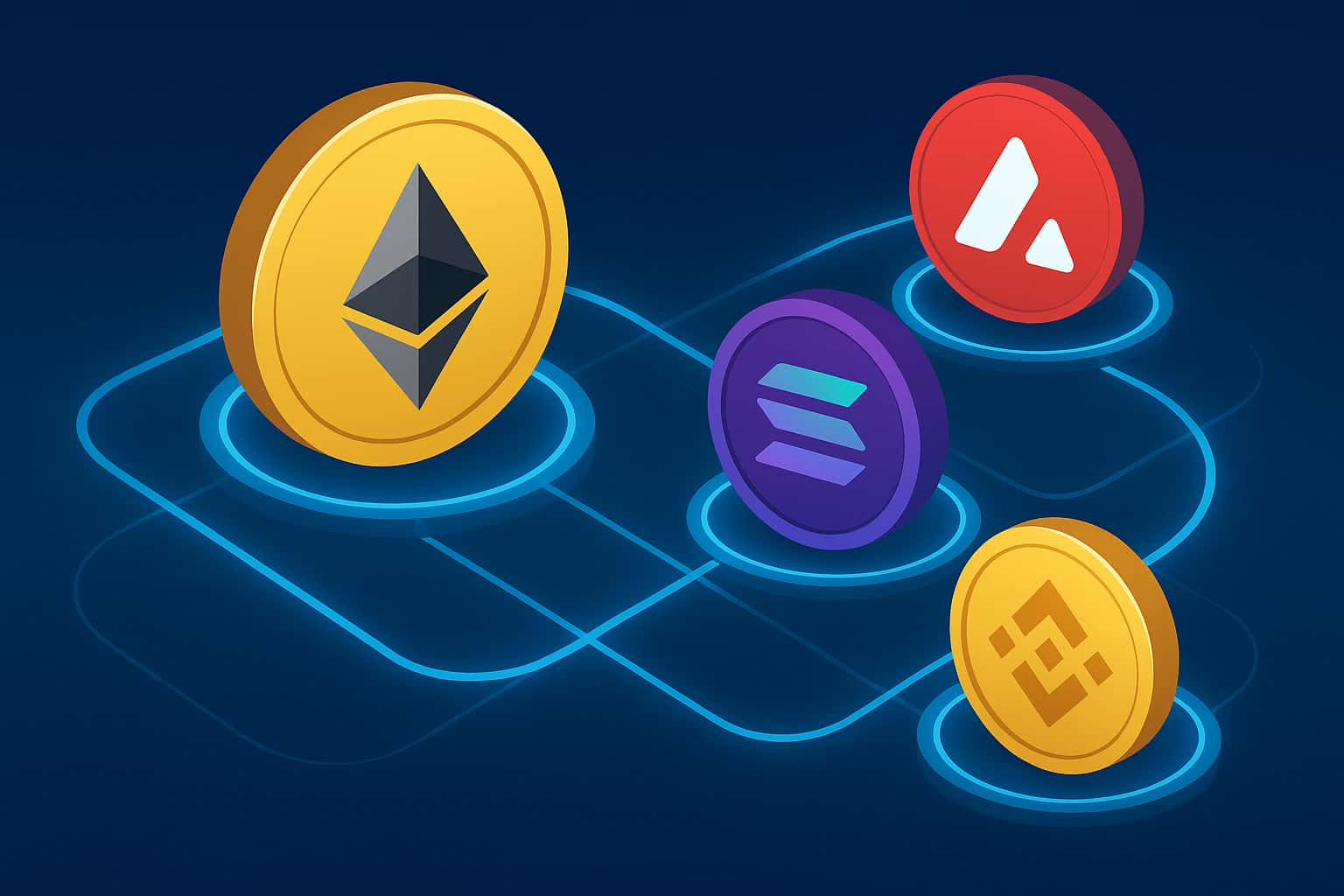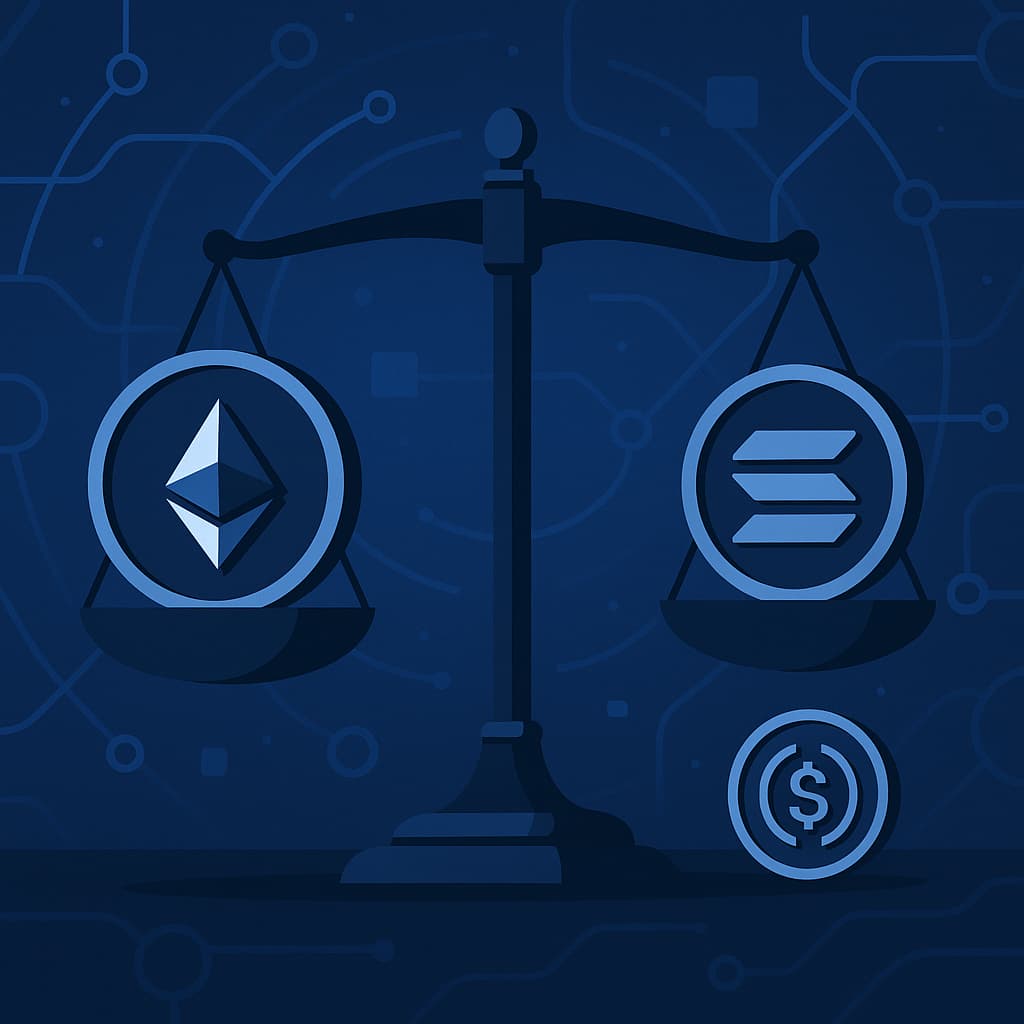-
In the dynamic landscape of cryptocurrency development, token standards play a pivotal role in defining how tokens are created, managed, and interacted with across various platforms. Among these standards, ERC-20 and BRC-20 have emerged as significant contenders, each catering to different blockchain ecosystems—Ethereum and Bitcoin, respectively. This comprehensive analysis delves into the intricacies of ERC-20 and BRC-20 token standards, comparing their technical frameworks, use cases, advantages, and challenges to provide a clear understanding for businesses and developers navigating the tokenization space.
Introduction
The proliferation of blockchain technology has given rise to various token standards, each designed to address specific needs within their respective ecosystems. ERC-20, introduced by Ethereum, has become the de facto standard for fungible tokens, enabling seamless interoperability and functionality across decentralized applications (dApps). On the other hand, BRC-20, built on the Bitcoin network using the Ordinals protocol, represents a novel approach to tokenization on the world's most secure and decentralized blockchain. Understanding the distinctions between ERC-20 and BRC-20 is crucial for businesses and developers aiming to leverage tokenization for diverse applications, from decentralized finance (DeFi) to digital assets management.
Understanding Token Standards
Token standards are predefined rules and protocols that dictate how tokens are created, transferred, and managed on a blockchain. They ensure interoperability between different tokens and platforms, allowing for standardized interactions within the ecosystem. By adhering to these standards, developers can create tokens that are compatible with wallets, exchanges, and other services, fostering a cohesive and efficient blockchain environment.
ERC-20 Token Standard
Overview
ERC-20 (Ethereum Request for Comments 20) is a technical standard used for creating and implementing fungible tokens on the Ethereum blockchain. Introduced in 2015 by Fabian Vogelsteller, ERC-20 defines a set of rules that all Ethereum tokens must follow, ensuring uniformity and compatibility across the Ethereum ecosystem. This standard has been instrumental in the explosive growth of Initial Coin Offerings (ICOs) and the broader decentralized finance (DeFi) movement.
Technical Specifications
ERC-20 defines six mandatory functions and three optional functions that a smart contract must implement to be considered ERC-20 compliant. These functions facilitate the basic operations of token transactions, such as transferring tokens, checking balances, and approving third-party transfers.
Mandatory Functions:
- totalSupply(): Returns the total supply of the token.
- balanceOf(address account): Returns the balance of a specific account.
- transfer(address recipient, uint256 amount): Transfers a specified amount of tokens to a recipient.
- transferFrom(address sender, address recipient, uint256 amount): Transfers tokens on behalf of a sender.
- approve(address spender, uint256 amount): Approves a spender to transfer a specified amount of tokens.
- allowance(address owner, address spender): Returns the remaining number of tokens that a spender is allowed to transfer.
Optional Functions:
- name(): Returns the name of the token.
- symbol(): Returns the symbol of the token.
- decimals(): Returns the number of decimals the token uses.
Use Cases
ERC-20 tokens have a wide array of applications, including but not limited to:
- Initial Coin Offerings (ICOs): Facilitating fundraising by issuing tokens representing equity or utility.
- Decentralized Finance (DeFi): Enabling lending, borrowing, and trading through tokens.
- Gaming and NFTs: Serving as in-game currencies or for fractional ownership of non-fungible tokens.
- Stablecoins: Providing price-stable digital currencies pegged to fiat currencies.
Also, Read | Create DeFi Index Fund with Custom ERC-4626 Tokenized Vaults
BRC-20 Token Standard
Overview
BRC-20 is a relatively new token standard that operates on the Bitcoin blockchain, leveraging the Ordinals protocol. Introduced as a way to enable fungible tokens on Bitcoin, BRC-20 represents a significant development, given Bitcoin's original design focused primarily on peer-to-peer value transfer without native support for complex token standards like ERC-20.
Technical Specifications
Unlike ERC-20, which utilizes Ethereum's smart contract capabilities, BRC-20 operates within Bitcoin's more limited scripting environment. BRC-20 leverages the Ordinals protocol to assign unique identifiers to individual satoshis (the smallest unit of Bitcoin), effectively enabling the creation and management of fungible tokens through metadata inscriptions.
Key Components:
- Ordinals Protocol: Assigns unique numbers to satoshis, allowing for individual tracking and metadata association.
- Metadata Inscriptions: Embeds token information directly onto the Bitcoin blockchain, detailing token properties and transactions.
- Off-Chain Infrastructure: Due to Bitcoin's limited scripting capabilities, BRC-20 relies on off-chain services for certain functionalities, such as token issuance and management.
Use Cases
BRC-20 tokens, while still emerging, hold potential for various applications, including:
- Digital Assets: Representing ownership of physical or digital goods.
- Payments: Facilitating peer-to-peer transactions with enhanced tracking.
- Decentralized Applications (dApps): Enabling basic token interactions on the Bitcoin network.
- Tokenized Securities: Offering regulated financial instruments on Bitcoin.
Also, Check | A Quick Guide to BRC 20 Token Development
Comparative Analysis
Technical Differences
Blockchain Ecosystem:
- ERC-20: Operates on Ethereum, a blockchain designed with Turing-complete smart contracts, enabling complex programmable interactions.
- BRC-20: Functions on Bitcoin, which lacks native smart contract capabilities, relying on the Ordinals protocol for tokenization.
Smart Contract Capabilities:
- ERC-20: Utilizes Ethereum's robust smart contract functionality, allowing for intricate token behaviors and integrations.
- BRC-20: Limited by Bitcoin's scripting language, resulting in simpler token functionalities and greater reliance on off-chain solutions.
Transaction Speed and Costs:
- ERC-20: Subject to Ethereum network congestion, leading to variable gas fees and transaction times.
- BRC-20: Benefits from Bitcoin's established network, though inscription data can impact transaction sizes and fees.
Ecosystem and Community Support
ERC-20:
- Mature Ecosystem: Extensive developer tools, libraries, and integrations with wallets, exchanges, and DeFi platforms.
- Active Community: Large developer and user base contributing to continuous improvements and innovations.
BRC-20:
- Emerging Ecosystem: Growing interest and development, but still in nascent stages compared to Ethereum.
- Community Support: Increasing attention from Bitcoin enthusiasts and developers exploring tokenization possibilities.
Scalability and Performance
ERC-20:
- Scalability Challenges: Ethereum's network can become congested, leading to high gas fees and slower transaction processing during peak times.
- Layer 2 Solutions: Efforts like Optimistic Rollups and zk-Rollups aim to enhance scalability and reduce costs.
BRC-20:
- Bitcoin's Proven Scalability: Highly secure and decentralized, but not inherently designed for high-throughput token transactions.
- Inscription Data Impact: Adding metadata can increase block sizes, potentially affecting network performance and transaction fees.
Security Considerations
ERC-20:
- Smart Contract Risks: Vulnerabilities in smart contracts can lead to exploits and loss of funds if not properly audited.
- Proven Security: Ethereum's security model is robust, but the complexity of smart contracts introduces additional risk vectors.
BRC-20:
- Bitcoin's Security: Benefits from Bitcoin's long-standing security and decentralization.
- Metadata Integrity: Ensuring the integrity and correctness of metadata inscriptions is crucial, as errors can affect token functionality.
Flexibility and Customization
ERC-20:
- Highly Customizable: Developers can create complex token behaviors, integrate with various protocols, and implement advanced features.
- Standard Extensions: Standards like ERC-721 and ERC-1155 offer non-fungible and multi-token capabilities, respectively.
BRC-20:
- Limited Customization: Constraints of Bitcoin's scripting environment restrict the complexity and customization of token functionalities.
- Focus on Simplicity: BRC-20 aims to provide basic fungible token capabilities without the extensive feature set of ERC-20.
Also, Discover | A Detailed Guide to BRC-20 Token Launchpad Development
Benefits of ERC-20 and BRC-20
ERC-20 Benefits
- Interoperability: Standardization ensures compatibility across wallets, exchanges, and dApps.
- Robust Tooling: Extensive developer resources and tools facilitate token creation and management.
- Vibrant Ecosystem: Access to a wide range of DeFi applications and services.
- Flexibility: Ability to implement complex token behaviors and integrate with smart contracts.
BRC-20 Benefits
- Bitcoin's Security: Inherits Bitcoin's robust security and decentralization.
- Simplicity: Easier to implement for basic fungible tokens without the overhead of complex smart contracts.
- Immutable Ledger: Token transactions benefit from Bitcoin's immutable and transparent ledger.
- Growing Interest: Increasing adoption and exploration within the Bitcoin community.
Challenges and Limitations
ERC-20 Challenges
- Scalability Issues: Network congestion can lead to high gas fees and delayed transactions.
- Smart Contract Vulnerabilities: Potential for bugs and exploits in smart contract code.
- Environmental Concerns: Ethereum's proof-of-work consensus mechanism has been criticized for its energy consumption, though transitioning to proof-of-stake aims to address this.
BRC-20 Challenges
- Limited Functionality: Bitcoin's scripting limitations restrict the complexity and capabilities of tokens.
- Ecosystem Maturity: Less developed tooling and fewer integrations compared to Ethereum.
- Dependence on Off-Chain Solutions: Reliance on external services for certain functionalities can introduce vulnerabilities and dependencies.
- Transaction Costs: Metadata inscriptions can increase transaction sizes and fees on the Bitcoin network.
Also, Explore | ERC 4337 : Account Abstraction for Ethereum Smart Contract Wallets
Future Outlook
ERC-20 Evolution
Ethereum continues to evolve, with the transition to Ethereum 2.0 aiming to address scalability and energy efficiency through proof-of-stake and shard chains. These advancements are expected to enhance ERC-20's capabilities, reduce transaction costs, and improve overall network performance. Additionally, innovations in Layer 2 solutions and cross-chain interoperability will further solidify ERC-20's position in the tokenization landscape.
BRC-20 Evolution
BRC-20 is in its early stages, with ongoing developments focused on enhancing functionality and ecosystem support. As the Bitcoin community explores more sophisticated tokenization methods and integrates with emerging protocols, BRC-20 could see increased adoption and diversification of use cases. Collaborative efforts to improve tooling, security, and interoperability will be crucial in determining BRC-20's long-term viability and competitiveness against established standards like ERC-20.
Frequently Asked Questions (FAQ)
1. What is the primary difference between ERC-20 and BRC-20 token standards?
ERC-20 is a token standard on the Ethereum blockchain, leveraging its smart contract capabilities to enable complex, programmable tokens. BRC-20, on the other hand, operates on the Bitcoin blockchain using the Ordinals protocol, offering a simpler approach to fungible token creation without native smart contracts.
2. Which token standard is more widely adopted?
ERC-20 is significantly more widely adopted, benefiting from Ethereum's extensive ecosystem, developer community, and integration with numerous dApps and DeFi platforms. BRC-20 is relatively new and still gaining traction within the Bitcoin community.
3. Can BRC-20 tokens be as versatile as ERC-20 tokens?
Due to Bitcoin's limited scripting capabilities, BRC-20 tokens are generally less versatile and feature-rich compared to ERC-20 tokens. ERC-20's support for complex smart contracts allows for a broader range of functionalities and integrations.
4. What are the security implications of using ERC-20 vs BRC-20?
ERC-20 tokens are subject to smart contract vulnerabilities, which can be exploited if not properly audited. BRC-20 tokens benefit from Bitcoin's robust security model, but ensuring the integrity of metadata inscriptions is crucial. Both standards have their own security considerations that must be addressed during implementation.
5. How do transaction costs compare between ERC-20 and BRC-20 tokens?
ERC-20 transactions incur gas fees based on Ethereum's network congestion, which can be high during peak times. BRC-20 transactions on Bitcoin may also face higher fees due to larger transaction sizes from metadata inscriptions. Both standards have cost implications that vary with network usage.
6. Is it possible to bridge ERC-20 and BRC-20 tokens for cross-chain functionality?
While technically feasible, bridging ERC-20 and BRC-20 tokens requires specialized cross-chain protocols and infrastructure. Such bridges are still in development and may face challenges related to security, interoperability, and standardization.
7. Which token standard is better for enterprise applications?
The choice depends on specific business requirements. ERC-20 offers greater flexibility and integration capabilities, making it suitable for complex enterprise applications in DeFi, supply chain, and beyond. BRC-20 may be preferred for applications prioritizing Bitcoin's security and simplicity.
8. Are there any regulatory considerations specific to ERC-20 or BRC-20 tokens?
Both ERC-20 and BRC-20 tokens must comply with relevant financial regulations, which can vary by jurisdiction. ERC-20 tokens, often used in ICOs and DeFi, may face stricter regulatory scrutiny compared to BRC-20 tokens, which are still emerging and less defined in regulatory contexts.
Conclusion
The comparison between ERC-20 and BRC-20 highlights the varied approaches to tokenization within blockchain: ERC-20, leveraging Ethereum's advanced smart contracts, enables versatile, feature-rich tokens widely adopted across industries, while BRC-20 introduces fungible tokens to Bitcoin, capitalizing on its unmatched security and decentralization despite scripting limitations. The choice between these standards depends on functionality, ecosystem support, security, and scalability needs—ERC-20 excels in complex applications within Ethereum, whereas BRC-20 offers a simpler, secure alternative on Bitcoin. As blockchain evolves, advancements in both standards will shape their roles in an increasingly competitive digital landscape, making it vital to stay informed.
If you planning to explore the potential of ERC20 token development levereging the potential or ERC-20 or BRC-20 standard, connect with our skilled blockchain developers to get started.

Our Offices
INDIA
Emaar Digital Greens, Sector 61,
Gurugram, Haryana
122011.
Welldone Tech Park,
Sector 48, Sohna road,
Gurugram, Haryana
122018.















